We hope you enjoy these reflections on the recent Rome conference submitted by IARPP members from around the world who attended. We begin with comments from members of the local conference committee in Rome, followed by reviews of some of the conference programs, and ending with comments from those responding to the conference theme as well as the warm camaraderie we experienced in Rome.
Susanna Federici-Nebbiosi, Gianni Nebbiosi
Margarita Kahn
Maria Tammone
Maria Grazia Petriglia
Dimitrios Tsiakos
Rosario Castaño
Steven Knoblauch
Noga Ariel-Galor
Daud Saeed
Victor Doñas
Malin Fors
Christina Emanuel
Mark Gerald
By Susanna Federici-Nebbiosi (Italy) and Gianni Nebbiosi (Italy)
Conference Co-chairs
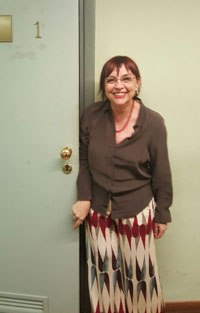 As we said in our introduction to the conference, our goal was to expand our knowledge and clinical sensitivity by highlighting the centrality of temporal dynamics and the forms of vitality in human communication.
As we said in our introduction to the conference, our goal was to expand our knowledge and clinical sensitivity by highlighting the centrality of temporal dynamics and the forms of vitality in human communication. 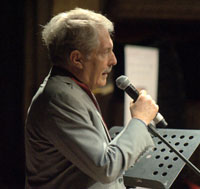 What does it mean to “feel” that something is happening and to understand how that happens? And how can we talk about all of this? The only people who talk about this directly are artists, as their daily work revolves around the “how.” How something is done is precisely what touches and moves audiences. “How” is not about technical performance, but rather is about interpretation, interpretation of how something is done, not what is done or why. In this way one’s personal style becomes embodied in an experience and helps us discover what this other person is feeling. These themes all touch on very delicate and crucial issues in contemporary psychoanalysis.
What does it mean to “feel” that something is happening and to understand how that happens? And how can we talk about all of this? The only people who talk about this directly are artists, as their daily work revolves around the “how.” How something is done is precisely what touches and moves audiences. “How” is not about technical performance, but rather is about interpretation, interpretation of how something is done, not what is done or why. In this way one’s personal style becomes embodied in an experience and helps us discover what this other person is feeling. These themes all touch on very delicate and crucial issues in contemporary psychoanalysis.
We believe that the Rome conference was a great opportunity to expand the clinical wisdom of the relational approach in psychoanalysis and explore the forms of vitality. We had very powerful responses to the papers that were presented in the parallel sessions as well as during the five plenaries. We wish to thank all the presenters for understanding so well the conference goals and for contributing to a great experience. We want also to thank those who attended the conference for their enthusiasm and for appreciating such an unusual conference venue as an opera theatre. One of the main successes of this event, we feel, was the vitality of the participants’ sharing in the meaning of the ideas and the spirit of the conference.
Finally, we wish to thank once again the international and the local conference committees and the entire IARPP community for making possible this “dream come true.”
Susanna Federici-Nebbiosi, PhD
Gianni Nebbiosi, PhD
Via Tacito 7
Rome 193 Italy
Email Susanna Federici-Nebbiosi
Email Gianni Nebbiosi
By Margarita Kahn (Italy),
Member of the Local Conference Committee
(click here for Italian)
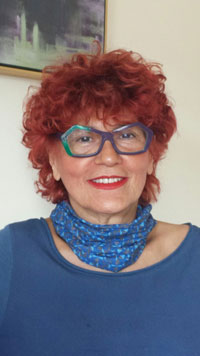 The party’s over…The curtain has fallen…The lights are out…However, the cluttered sound of our emotions remains.
The party’s over…The curtain has fallen…The lights are out…However, the cluttered sound of our emotions remains.
The Teatro Argentina stage was a beautiful location, and the conference itself was an important and intense program, with moments of strong emotion, a robust exchange of ideas, and themes of great importance that were presented.
Behind the scenes, the local conference committee’s work began with an idea from Gianni and Susi Nebbiosi, one that seemed initially like a pipedream. But their tenacity and untiring strength was contagious, and, without noticing it, we all found ourselves sharing ideas and experiences. We worked a lot, we laughed, and, above all, we felt like a group that derived its strength from recognizing both our differences and our capabilities, as we directed our energies toward the success of the conference.
I’d like to share a few comments about the conference that I received from the audience:
“It was a pleasure sharing our time in Rome with you. Congratulations on your great organizational capabilities.” –Rosa Velasco (Spain)
“I’d like to give my most sincere congratulations to you and your collegues for your performance. I think that you and the team thought about every little detail, and this ensured the success of the conference.” – Amalia Rivera (Mexico)
“It´s been a pleasure being in Rome at the conference. It was an enriching experience. Thank you very much for your kindness.” – Alejandra Plaza (Mexico)
“The Rome conference was incredibly, educational and well planned! Thank you for that.” – Shlomit Gadot (Israel)
La festa è finita…il sipario calato…le luci spente…ci rimane il suono disordinato delle nostre emozioni.
Il palco del teatro Argentina è stato una location bellissima e il convegno un’ importante e intensa rappresentazione, con momenti di forti emozioni e di scambi di idee e contenuti alti.
Dietro le quinte, il lavoro del comitato organizzatore locale…Siamo partiti da un’ idea forte di Gianni e Susi, idea che in alcuni momenti ci sembrava irraggiungibile. La loro tenacia e forza instancabile però ci ha contagiato e, senza accorgerci, c’eravamo tutti dentro, scambiandoci idee ed esperienze. Abbiamo lavorato tanto, abbiamo riso e soprattutto ci siamo sentiti un gruppo che ha preso forza dal riconoscimento delle diverse capacità, orientate alla buona riuscita della conferenza.
Vorrei condividere qualche commento arrivato dalla platea:
“Fue un placer compartir con vosotros nuestra estancia en Roma. Felicidades por tan alta capacidad de organización. Un abrazo,” –Rosa Velasco (Spagna)
“It´s been a pleasure being in Rome at the Conference. It was an enriching experience. Thank you very much for your kindness.” –Alejandra Plaza (Mexico)
“The Rome conference was incredibly educational and well planned! Thank you for that.” Shlomit Gadot (Israel)
“Tanto tú como todas tus compañeras reciban mis más sinceras felicitaciones por su desempeño, pues creo que atendieron hasta el más mínimo detalle y eso en gran parte permitió que el evento fuera todo un éxito.” –Amalia Rivera (Mexico)
Margarita Kahn, PhD
via Basento 32 – 00198 Roma
Email Margarita Kahn
By Maria Tammone (Italy)
Member of the Local Conference Committee
I would like to share a few of my reflections about my experience during the Rome conference, adding to the “chorus” of voices also sharing their impressions here in the eNews.
First of all, I would like to comment on my experience as co-leader of a post plenary discussion group along with Juan Francisco Jordan (Chile) and Carmine Schettini (Italy). It was really a stimulating and useful experience in which colleagues from different countries were able to share their opinions, comments, and particular points of view with each other.
As a member of the Local Committee I am happy to report that all went really well, with all participants having the opportunity to enjoy Rome at the same time as the conference in the beautiful and historical location of the Teatro Argentina.
Maria Tammone, MD
Via Montegrappa 46
00048 Nettuno/Roma Italia
Email Maria Tammone
By Maria Grazia Petriglia (Italy)
Certainly the richness of ideas, but also the feeling of elegance and harmony accompanied me through the time passed at the conference! 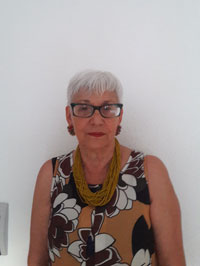 Harmony and time…the integration of history’s time (as seen in Rome’s stratification), the conference’s time, and the time of everyday life, including the background noise of traffic—all of these contributed to the balanced feeling of well-being and care that I experienced. Perhaps this was an island we visited for just a few days, but it was an island open to the world.
Harmony and time…the integration of history’s time (as seen in Rome’s stratification), the conference’s time, and the time of everyday life, including the background noise of traffic—all of these contributed to the balanced feeling of well-being and care that I experienced. Perhaps this was an island we visited for just a few days, but it was an island open to the world.
* * *
Certamente la ricchezza delle idee…ma quella sensazione di eleganza ed armonia che mi ha accompagnato nel tempo della Conferenza! L’armonia e il tempo…l’integrazione tra il tempo della storia (la stratificazione di Roma), i tempi della conferenza, il tempo della quotidianità, compreso il sottofondo del rumore del traffico. Un’equilibrio di “benessere”, che ha a che fare con l’aver cura. Forse un’isola per qualche giorno, ma un’isola aperta al mondo.
Maria Grazia Petriglia, PhD
Largo Pannonia n.1
00183 Roma Italia
Email
Space, Time, and Hope: A Few Reactions to the Rome Conference
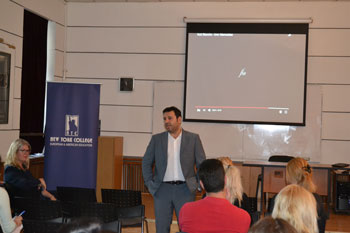 By Dimitrios Tsiakos (Greece)
By Dimitrios Tsiakos (Greece)
I would like to present my personal experience of my participation at the recent IARPP conference in Rome, the Eternal City. According to the history of my country (Greece), the word “theatre” always touches a deep feeling of shared experience. The etymology of that word is the Greek word theatron, meaning the people in the theatre, a show, a spectacle, or literally a “place for viewing.” Theatron in turn originates from theasthai, which means to behold, and is related to thea—a view, a seeing—and tron, a suffix denoting place.
How outstanding was the lecture from Antonio Calbi, the director of the conference venue, the Teatro Argentina! Calbi spoke about psychoanalysis and its relationship to art. Citing the history of the concept of theatre, he analyzed the importance of relationships and the way people deeply desire experiences that occur in large shared gatherings such as at the theatre. The aim of this shared experience is a mutual understanding of the world and, especially, the fostering of a feeling of camaraderie. I do not think that someone could have better conveyed the meaning of active participation in a relationship than did Calbi. He echoed Stephen Mitchell’s (1995) idea that “…participation and observation are never separable, that in the very act of observing, one is also participating, and therefore arriving at a version of reality, an undistorted vision of reality” (p.70).
Calbi also illustrated how the sense of individuality experienced by members of an audience seated in a theatre is transformed into a collective experience through the common experience of seeing a play. It was wonderful listening to him describe how when the lights go down the result is the elimination of individuality and the simultaneous opening of the collaborative creative process; perhaps he was talking about the unconscious when describing this process.
I felt like I was swimming in a reverie as I thought about the concepts of intersubjectivity that Stolorow and Benjamin, among others, have introduced, their emphasis on the field of intersection between two subjectivities and the interplay between two different subjective worlds. And I was feeling how all parts of myself were feeling accepted, incorporated, and metabolized during Calbi’s presentation, while at the same time I was metabolizing and digesting the experience with all of you. After all, Benjamin (1990) states, “In trying to establish itself as an independent entity, the self must yet recognize the other as a subject like itself in order to be recognized by it” (p. 35).
Moreover, the closing dance performance seemed perfectly attuned to the audience, particularly in its incorporating of the audience’s participation. It reminded me of Ogden’s (1994) description of the relational matrix (1994): “I believe that, in an analytic context, there is no such thing as an analysand apart from the relationship with the analyst, and no such thing as an analyst apart from the relationship with the analysand” (p. 3).
I am looking forward the next “moment of meeting” with IARPP, but I am not in a hurry, as the experience of the present is just the unformulated experience of tomorrow, as Donnel Stern so profoundly demonstrated at Friday’s lecture.
Lastly, I would like deeply to thank Spyros Orfanos for his generous help during the conference.
REFERENCES
Benjamin, J. (1990). An Outline of Intersubjectivity: The Development of Recognition. Psychoanal. Psychol., 7S:33-46.
Mitchell, S.A. (1995). Interaction In The Kleinian And Interpersonal Traditions. Contemp. Psychoanal., 31:65.
Ogden, T.H. (1994). The Analytic Third: Working with Intersubjective Clinical Facts. Int. J. Psycho-Anal., 75:3-19.
Stolorow, R., Brandchaft, B., & Atwood, G. (1987). Psychoanalytic Treatment: An Intersubjective Approach. Hillsdale, NJ: The Analytic Press.
Dimitrios Tsiakos
Psychologist, Clinical Supervisor, and Scientific Director
Psychotherapy Center of Southern Suburbs
Amfitheas Avenue 103, 17562 P. Faliro Greece
Email Dimitriios Tsiakos
Website: www.psycare.gr
A Reflection on the 13th IARPP Conference in Rome
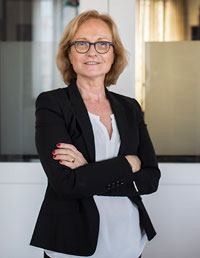 By Rosario Castaño (Spain)
By Rosario Castaño (Spain)
It is my pleasure to say thanks to the organization for an amazing and interesting conference in Rome. I presented during the session entitled “Relational Psychoanalysis Around the World,” which included colleagues representing Italy, Greece, Israel, Australia, the USA, Chile, and Spain. Our aim was to inform others about and compare experiences within our relational contexts and perspectives. In our panel we were able to identify some differences, difficulties, and developments emergent in the relational world. I tried to give a global vision about how we, in Spain, got to relational thought, although of course I could only could talk about this topic from my own subjectivity. As Mitchell said, reality is not only discovered but in part created through the theories we build around it.
The specific reality of Spanish society and the background of relational psychoanalysis in Spain requires first a look at the new world, Latin America, as well as old Europe and the USA. Some of the most important authors writing in Spanish who have contributed to the creation of relational thought have lived in Latin America, particularly Pichon-Rivière. The impact of Pichon-Rivière’s social perspective in Spain is comparable to that of The William Alanson White Institute in the United States.
To understand how we in Spain have arrived at the modern concept of the psychoanalytic therapeutic relationship, it is important to understand three long and interesting periods in our history, full of expectations and obstacles. The first period occurred between the late 1960s and the late 1970s, the years of a long and sad dictatorship in Spain. During the second period, the first years of a democracy in the 1980s and 1990s, we were eager to discover new experiences. The third period, from 2000 to today, has been a time of deep social transformation because of the Spanish financial crisis and the impacts of immigration.
In 2005 many of us joined IARPP. Alejandro Ávila encouraged formation of the Spanish chapter of IARPP. He was the first President of IARPP-Spain, and he also founded the first master’s program in relational psychoanalytic psychotherapy in Spain.
Ávila also founded the Relational Psychotherapy Institute (IPR). During the past ten years The Relational Psychotherapy Institute (IPR) and IARPP-Spain, with Ávila as director, have published a series of books on relational thought, including original titles from Spanish authors and translations of foreign authors’ work. At the moment we have 15 titles published. We have also created a web page for IARPP-Spain (http://www.psicoterapiarelacional.com/IARPPEspaña/tabid/66/Default.aspx), and an online relational psychoanalysis journal, Clinica e Investigación Relacional (http://www.psicoterapiarelacional.es/CeIRREVISTAOnline/CEIRPortada.aspx).
In October 2015 Rosa Velasco was elected President of IARPP-Spain. In the coming months we have a number of programs planned, including the 4th meeting of the IPR in Salamanca this October, featuring Alejandro Ávila, Peter Fonagy, and Joan Coderch as our main guests. The IARPP-Spain conference will take place in Barcelona in early 2017 with Paul Wachtel and Joan Coderch as featured presenters.
We are living difficult times in this globalized world. In my opinion all these social changes are connected to our relational psychoanalytical concepts, including the need to belong somewhere and to someone, to be recognized, to develop an identity, to keep the capacity of agency, and the most important of all, to establish a relationship of actual intimacy with another human being.
I hope to see you at the next Conference in Sydney.
Rosario Castaño Catalá received her MA in Psychology from the Universidad Complutense Madrid in 1980. She currently heads the clinical psychology department and coordinates the sexology unit at the Palacios Institute of Women’s Health. She is vice-president our Relational Psychotherapy Institute, located in Madrid. Castaño is also faculty in the master’s in relational psychotherapy program at her institute, supervisor for the Sponsored Psychotherapeutic Attention Service, and coordinator of cinema forum activities in that institution since 2008.
Alejandro Ávila, along with other colleagues, coauthored an article, “Construyendo una historia grupal del Pensamiento Relacional en España: un relato de nuestra contratransferencia con el Psicoanálisis.” Clínica e investigación Relacional. Revista electronica de Psicoterapia. Vol. 1, No. 1, Junio 2007, pp 128-149.
Rosario Castaño Catalá, MA
Email Rosario Castaño
Vitality Forms: Infant Research, Neurosciences, and
Clinical Psychoanalysis
Reflections on Conference Plenary
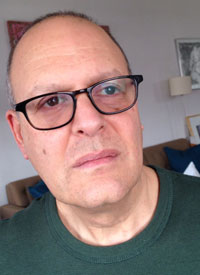
By Steven Knoblauch (USA)
Panel Moderator
This panel, launching the first full day of the IARPP Rome conference this past June, offered three very different but related presentations that brought us a sense of how vitality forms can be employed in clinical interaction. We began with the privilege of listening to Nadia Bruschweiler-Stern, MD, wife of the late Daniel Stern, as she offered us a poignant video of her interaction with an infant in a European orphanage nursery traumatized by negligence if not some form(s) of abuse. What impacted the audience was how clearly the syncopation of her vocal and embodied rhythms and tonalities became the mode whereby she was able to begin to engage this otherwise poorly attached child.
Pier Francesco Ferrari, PhD, then illustrated, also with the use of video, how imitation between mother and infant macaques—as well as some quite entertaining similar interactions between infant macaques and humans—becomes the scaffolding for early behavioral patterns of attachment and emotional regulation. Massimo Ammaniti, MD, then offered a carefully narrated clinical example of how similar forms of vitality—in this particular case the frequency, timing, and intensity of a doorbell ringing—became the unconscious expression of previously split off emotional experience for his patient.
Taken together, the videos and the clinical vignette allowed us to feel a wash of material that helped us not just to understand but also to experience how attention to forms of vitality—the fluid rhythms of emotional interactive movement out of which the structure of verbal categories emerge for reflection and meaning—can become central to clinical recognition. Clearly my comments here only approximate a re-presentation of this wonderful plenary panel, one that shaped the spirit and direction of the entire conference.
Steven Knoblauch, PhD
Email Steven Knoblauch
website: http://stevenknoblauchphd.com
Back to Top…
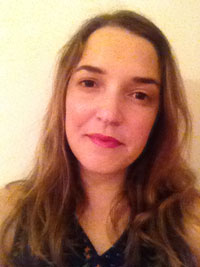 By Noga Ariel-Galor (Israel)
By Noga Ariel-Galor (Israel)
I attended the IARPP conference in Rome, where I presented a paper on Marina Abramović and the therapist’s state of mind.
I will start at the beginning, with the call for papers—what a delight! What a willful shift in power relations, with the emphasis placed on what psychoanalysis can learn from the arts, instead of psychoanalysis being used to analyze art and artists, as was previously accepted. This ability to “make space” for another discipline’s teachings is, in my eyes, an outcome of both maturity and humility, and the results were accordingly creative and insightful.
The conference was held in a perfect venue, the Teatro Argentina, which, as a place of beauty and the site of political assassinations, symbolizes not only Rome’s beauty but also its complex history. The presentations invited the conference guests to confront their respective peoples’ painful histories—their changing complementary roles as oppressed and oppressor, aggressor and victim. We boldly reflected on why our psychoanalytic community is not as diverse as we would like it to be, with a membership that is largely homogeneous in its sociopolitical background and skin color.
In conclusion, the conference proved once again that intersubjectivity is only one aspect of relationality, and that interdisciplinarity and sociopolitical sensitivity are also important parts of the whole. I look forward to conferences to come, where the relational movement will keep extending its arms and embracing new perspectives and ideas. I am certain we will benefit from this as subjects, and our patients will too.
Noga Ariel-Galor, PhD Student
10 De-Haz St., Tel-Aviv Israel
Email Noga Ariel-Galor
The 2016 IARPP Conference took place in the Teatro Argentina, a venue steeped in history and artistic luminescence. The program was fascinating in the way that it integrated perspectives derived from philosophy, literature, history, and the arts to give shape to a deeper and more relational sense of psychoanalysis. It was my first conference and I was struck by the combination of analytic nuance and intellectual vigor to be found in so many presentations. In the group discussions there was an opportunity to integrate and give voice to reflections.
As the conference progressed so too did the intensity of the interactions until, like the planes of perspective converging to their vanishing point, our imaginations carried us further and closer to potentialities of time and space. Perhaps to each of us something old and new was revealed, something of ourselves in each other…And now, another month has passed and as we read the sad news of our times, it is for me in some ways as my mother wrote:
Because I cannot
rip out my heart
or place it under my shoe,
I am here with a fistful
of verses
Let me in
I need to look at you
I need to sing in some forgotten
chapel
to sit in silence
where waves come in
over yesterday on to tomorrow
I need to be again
where I can’t win
– Jocelyn Ortt-Saeed (2004)
Dr. Daud Saeed, MBBS, FRANZCP
Mindscape Health
Level 3
William Bland Centre
229-231 Macquarie St
Sydney, 2000 Australia
Email Daud Saeed
Website: www.mindscapehealth.com
(click here for Spanish)
On the first day of the conference a Chilean colleague told me that Rome was a bunch of beautiful corners disguised as a city. On the last day of the conference I had the same feeling about the emerging city represented by the IARPP community. Along with most of the other Chilean IARPP “citizens,” I believe we had the chance to inhabit and explore many of these different corners, as listeners, as speakers, as moderators, in agreement and in difference, and as free thinkers.
Many challenges were outlined, including the importance of honoring the contributions of relational psychoanalysis, the need to connect with other fields to go further in our understanding, and the need for awareness of the different realities we live in as we endeavor to embrace human nature, from the clinical to the political.
I want to express the most profound gratitude to our Italian hosts for sharing with us their sounds and lyrics in such an open way that enabled us to carry them home as our own.
And I wish thank all the citizens of IARPP for the common projects and challenges that lie ahead of us. The contributions that relational psychoanalysis can make in these turbulent times in which we are living is an open question for all the citizens of our community to share.
Grazie Mille!
Muchas Gracias!
Thank you very much!
Un colega chileno me comentó el primer día de conferencia que Roma era una multitud de bellos rincones disfrazado de ciudad. En el último día de conferencia tuve el mismo sentimiento hacia esta ciudad emergente que representa la comunidad de la IARPP. Como la mayoría de los ciudadanos chilenos de IARPP, creo que tuvimos la experiencia de participar como oyentes, expositores, moderadores, en acuerdo y en diferencias, como pensadores libres.
Muchos desafíos fueron enunciados, atesorar las contribuciones del psicoanálisis relacional, la necesidad de conectarnos con otros campos para ir más allá en nuestras comprensiones, la necesidad de mantenernos despiertos y atentos a las diferentes realidades que vivimos en nuestro intento de abrazar la naturaleza humana, desde lo clínico a lo político.
Quiero expresar la más profunda gratitud a nuestros anfitriones italianos por compartir su música y su poética de manera tan abierta, que nos permitió traerla de regreso a casa como si fuera propia. Y agradecer a los ciudadanos de la IARPP por los nacientes proyectos y desafíos comunes que se están abriendo frente a nosotros. Cuáles son las contribuciones que el psicoanálisis relacional puede hacer en estos tiempos turbulentos que estamos viviendo es una pregunta abierta para todos los ciudadanos de nuestra comunidad.
Grazie Mille!
Muchas Gracias!
Thank you very much!
Víctor Doñas, MD
Psychiatrist, Psychoanalyst
Hernando de Aguirre 194 of 54
Santiago, Chile
Email Víctor Doñas
This was such a refreshing conference! The main program was about all kinds of creative variations on finding a third space, moving from theory, to clinical work, to art, even to the vagina (as proposed by Jill Gentile), and back again. It was about politics, suffering, and not dissociating from responsibility, as Donna Orange beautifully described. It was about black power, decolonization, and access to education in South Africa, presented by Sally Swartz, in what many felt was the most moving presentation of the conference.
Every conference has an additional unofficial program that makes space for another kind of learning. I learned about injustices done to the Maori people in New Zealand, hand paralysis in Turkey, Greece’s financial despair as the middle class is becoming poorer, Americans’ worries about Trump (actually, most of us were worrying about that), America’s suffering from climate change with uncontrolled fires, an amazing cat in Canada, migration issues in Australia, refugee camps in Papua New Guinea, Italian gastronomy, poetry from Pakistan, and performance art in Sweden.
As you all know, reality can exceed imagination. So this is also the conference where I learned about outer space. The real space. As a poetic intertwining of every space metaphor, I unbelievably enough met an astronomer from NASA, who generously told me about the upcoming Mars expedition. So space is the third but also the first and the second. The spaces are there to explore, and we are never alone. The community is so rich. I miss you all. See you in Sydney.
Malin Fors, MSc, Clinical Psychologist, Psychoanalyst
Finnmark Hospital Trust
District Psychiatric Center
Vest-Finnmark, Hammerfest Norway
Email Malin Fors
A Psychoanalytic Tent and Some Tables and Chairs
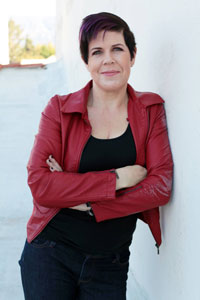 By Christina Emanuel (USA)
By Christina Emanuel (USA)
Lots of people liken relational psychoanalysis to a large tent under which diverse aspects of our theory and practice dwell. I’ve heard it’s a pretty big tent, with room for all comers. Of course there are some who are a little suspicious of our tent, wondering what hijinks we’re up to inside, and maybe worrying that the bouncers are letting in elements that seem, on the surface, to be mutually exclusive. Regardless, the Rome conference certainly delivered on its promise to bring together a rich diversity of ideas and people. It was a most welcoming, hospitable, and ever expansive tent.
But for me, even more than a big tent, the Rome conference was all about the tables and chairs.
I began by winding my way to the backstage conference space to attend the preconference workshop. The chairs, formerly in rows, had been shifted into a circle, slightly oval to accommodate the dimensions of the room. The presenters moved from behind the table to take their places in the circle. More people streamed in, and a second row of chairs formed around the first one. We leaned in. Then I glimpsed a colleague who lives—literally—half the world away from me. This is our third IARPP conference together. We shared a hug and moved our chairs together, the intimacy of the space defined by the arrangement of the furniture. And so the conference began.
That afternoon I attended a paper presentation. A beloved mentor who lives 3,000 miles away from me pulled a chair close. I turned toward him and placed a hand on his shoulder to share a private comment, the distance between us collapsing, and the connection replenished in person even as it continues across the miles and the hours of our daily lives. One of the pleasures of IARPP conferences is seeing in person so many people with whom I usually interact online.
Two days later we were at the magnificent Palazzo Brancaccio, enjoying camaraderie and celebrating the success of the conference. My husband and I, plates of food in hand, found a table with a couple of familiar faces and some empty chairs. Then a few more faces showed up, some new to us. We dragged over another table, and then another, and some more chairs too. Somehow we squished everything together. Someone brought us some more wine, and then dessert. We filled the space with our growing, free-form, inclusive table, where there was a place for everyone.
If we can think of a tent as the setting, the space wherein relational psychoanalysis dwells and IARPP conferences take place, then maybe the tables and chairs are the structures that facilitate the formation of our relationships with one another. I am finding that these relationships develop incrementally, with time and an accumulation of shared felt experiences, all evidence perhaps of a sort of furniture-enhanced intersubjectivity. I feel so fortunate that IARPP is the tent under which I can claim my place at the psychoanalytic table, one that feels simultaneously more intimate and more expansive each day.
Christina Emanuel, MFT, PsyD
16 S. Oakland Ave, Suite 201
Pasadena, CA 91101 USA
Email Christina Emanuel
Conference Reflections
 By Mark Gerald (USA)
By Mark Gerald (USA)
I’m sitting in my office here in New York City on a hot Sunday afternoon. I’ve been reading and thinking about psychoanalytic offices, something I do a lot. I’m trying to find my own voice in all that is crowding around in my head. I know I have my own distinctive take on the way that the spaces we work in are shaped by and affect the experience that patient and therapist have. I’m reaching for something that feels connected, so I can connect with what I am feeling.
Likewise, I am trying to find the space inside that represents something real about what IARPP in Rome was for me. Last night we had dinner with two other couples who were also in Rome. I was reminded of an email I received from someone who came to the panel I was part of on Sunday morning at 8:30 AM! This person, whom I met for the first time in Rome, and who lives in Italy, wrote with such poignancy. She referenced a song I played at the end of my paper by an African American pop group of the 1930s and 1940s called the Ink Spots. The song they sang was “Always” and I used it to convey something of the ineffable longing for love. It includes the lyrics, “Days may not be fair, always. That’s when I’ll be there, always. Not for just an hour, not for just a day, not for just a year, but, always.” She told me of the importance of that singing group in her own family story and then ended the email by writing, “And I hope if you ever come back to Tuscany you will visit, and I am sure you know the words…‘we’ll meet again, don’t know where, don’t know when, but I know we’ll meet again some sunny day.’”
I will always think of IARPP in Rome during the summer of 2016 with that fervent desire to meet again “some sunny day.” My deep thanks go to Susi, Gianni, and their amazing team for creating such a welcoming and creative environment to vitalize my experience at the conference.
Mark Gerald, PhD
211 Central Park West
Suite1i
New York, NY 10024 USA
Email Mark Gerald

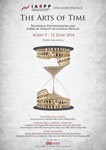
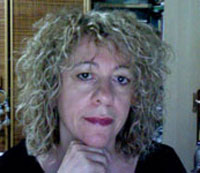
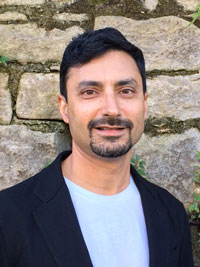 By Daud Saeed (Australia)
By Daud Saeed (Australia)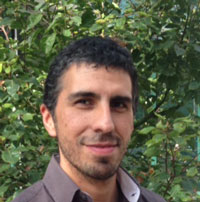 By Víctor Doñas (Chile)
By Víctor Doñas (Chile) By Malin Fors (Norway)
By Malin Fors (Norway)